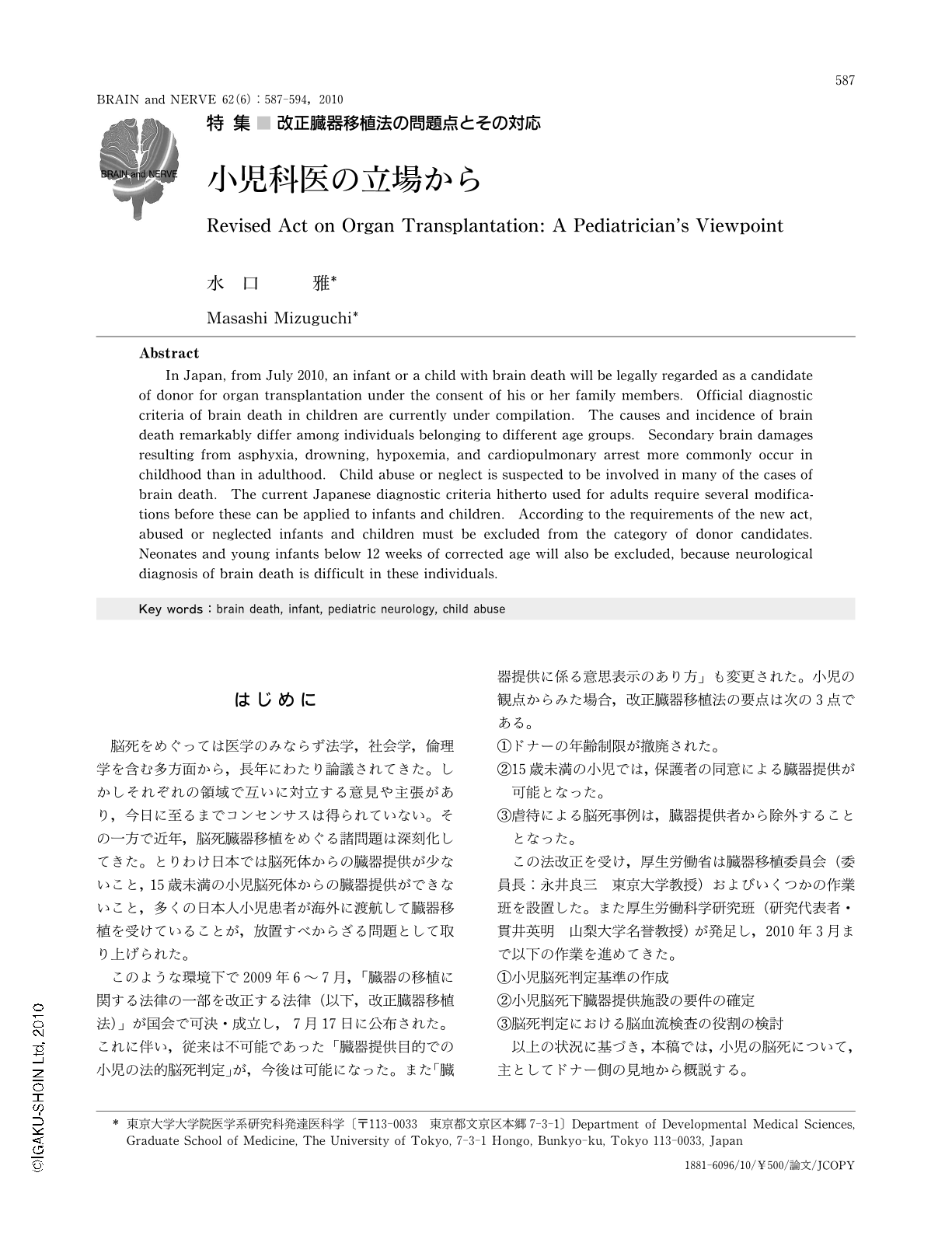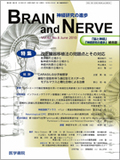Japanese
English
- 有料閲覧
- Abstract 文献概要
- 1ページ目 Look Inside
- 参考文献 Reference
はじめに
脳死をめぐっては医学のみならず法学,社会学,倫理学を含む多方面から,長年にわたり論議されてきた。しかしそれぞれの領域で互いに対立する意見や主張があり,今日に至るまでコンセンサスは得られていない。その一方で近年,脳死臓器移植をめぐる諸問題は深刻化してきた。とりわけ日本では脳死体からの臓器提供が少ないこと,15歳未満の小児脳死体からの臓器提供ができないこと,多くの日本人小児患者が海外に渡航して臓器移植を受けていることが,放置すべからざる問題として取り上げられた。
このような環境下で2009年6~7月,「臓器の移植に関する法律の一部を改正する法律(以下,改正臓器移植法)」が国会で可決・成立し,7月17日に公布された。これに伴い,従来は不可能であった「臓器提供目的での小児の法的脳死判定」が,今後は可能になった。また「臓器提供に係る意思表示のあり方」も変更された。小児の観点からみた場合,改正臓器移植法の要点は次の3点である。
①ドナーの年齢制限が撤廃された。
②15歳未満の小児では,保護者の同意による臓器提供が可能となった。
③虐待による脳死事例は,臓器提供者から除外することとなった。
この法改正を受け,厚生労働省は臓器移植委員会(委員長:永井良三 東京大学教授)およびいくつかの作業班を設置した。また厚生労働科学研究班(研究代表者・貫井英明 山梨大学名誉教授)が発足し,2010年3月まで以下の作業を進めてきた。
①小児脳死判定基準の作成
②小児脳死下臓器提供施設の要件の確定
③脳死判定における脳血流検査の役割の検討
以上の状況に基づき,本稿では,小児の脳死について,主としてドナー側の見地から概説する。
Abstract
In Japan,from July 2010,an infant or a child with brain death will be legally regarded as a candidate of donor for organ transplantation under the consent of his or her family members. Official diagnostic criteria of brain death in children are currently under compilation. The causes and incidence of brain death remarkably differ among individuals belonging to different age groups. Secondary brain damages resulting from asphyxia,drowning,hypoxemia,and cardiopulmonary arrest more commonly occur in childhood than in adulthood. Child abuse or neglect is suspected to be involved in many of the cases of brain death. The current Japanese diagnostic criteria hitherto used for adults require several modifications before these can be applied to infants and children. According to the requirements of the new act,abused or neglected infants and children must be excluded from the category of donor candidates. Neonates and young infants below 12 weeks of corrected age will also be excluded,because neurological diagnosis of brain death is difficult in these individuals.

Copyright © 2010, Igaku-Shoin Ltd. All rights reserved.


